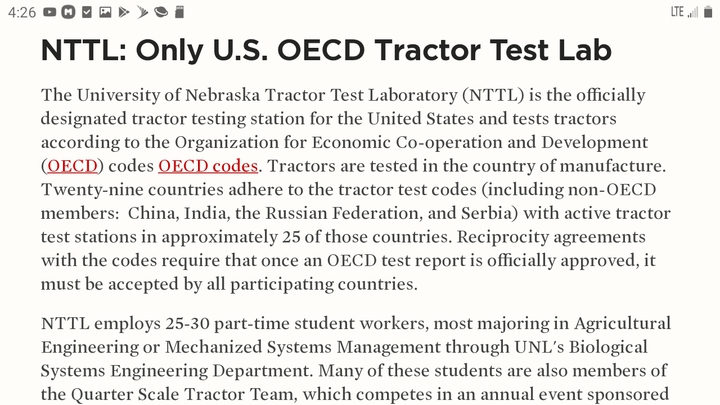Hello everyone!
I am a freshman in college (Penn State, Beaver Campus), and for my English class, we have to do a research paper. I am majoring in chemical engineering, but I love old tractors and I think tractors go hand in hand with engineering (although maybe not chemical engineering). So, I decided to do my paper about old tractors.
As of now, my working thesis is: Examining the reasons for and benefits of an increase in tractor drawbar pull weight from the introduction of tractors until 1980.
Any inputs about the thesis would be welcomed.
My thesis has to be specific (requirement for the writing) and I need to include 5 or more sources.
I am wondering if anyone her knows of any good journal articles, website articles, books, or other resources that talk about drawbar pull weight? Also, any sources about power advancements and increases or the benefits of more drawbar pull (larger implements, etc) would also be very helpful.
I know this is not the most typical post on this forum, but I really enjoy this forum and greatly respect everyone for how much help I have gotten with my Super C.
Thanks!
John
I am a freshman in college (Penn State, Beaver Campus), and for my English class, we have to do a research paper. I am majoring in chemical engineering, but I love old tractors and I think tractors go hand in hand with engineering (although maybe not chemical engineering). So, I decided to do my paper about old tractors.
As of now, my working thesis is: Examining the reasons for and benefits of an increase in tractor drawbar pull weight from the introduction of tractors until 1980.
Any inputs about the thesis would be welcomed.
My thesis has to be specific (requirement for the writing) and I need to include 5 or more sources.
I am wondering if anyone her knows of any good journal articles, website articles, books, or other resources that talk about drawbar pull weight? Also, any sources about power advancements and increases or the benefits of more drawbar pull (larger implements, etc) would also be very helpful.
I know this is not the most typical post on this forum, but I really enjoy this forum and greatly respect everyone for how much help I have gotten with my Super C.
Thanks!
John


